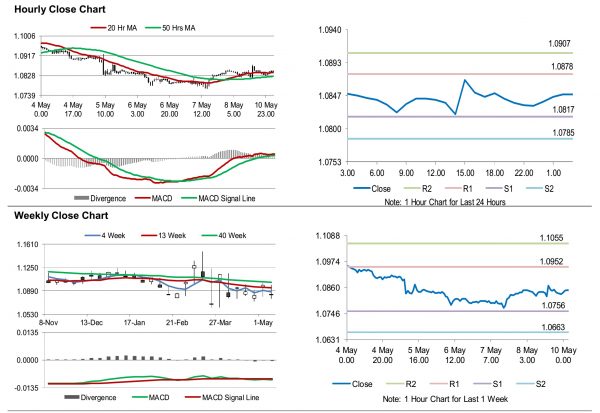For the 24 hours to 23:00 GMT, the EUR slightly declined against the USD and closed at 1.0836 on Friday.
On the macro front, Germany’s seasonally adjusted industrial production slumped 9.2% on a monthly basis in March, hitting its worst decline since the time series began in January 1991 and compared to a rise of 0.3% in the previous month. Moreover, Germany’s trade surplus narrowed to €12.8 billion in March, compared to revised surplus of €21.4 billion in the prior month. Meanwhile, the nation’s seasonally adjusted current account surplus widened to €24.4 billion in March, compared to a surplus of €23.7 in the previous month.
In the US, seasonally adjusted initial jobless claims dropped to 3169.0K on a weekly basis in the week ended 01 May 2020, less than market forecast and compared to a revised level of 3846.0K in the previous week. Moreover, consumer credit fell by $12.0 billion in March, more than market forecast and compared to a level of $22.3 billion in the earlier month. Furthermore, the unemployment rate rose to 14.7% in April. In the previous month, the unemployment rate stood at 4.4%. Meanwhile, nonfarm payrolls slumped by 20500.0K in April, less than expectations and compared to a revised decline of 870.0K in the prior month. Additionally, average hourly earnings rose 7.9% on an annual basis in April, more than expectations and compared to a revised rise of 3.3% in the previous month.
In the Asian session, at GMT0300, the pair is trading at 1.0848, with the EUR trading 0.11% higher against the USD from Friday’s close.
The pair is expected to find support at 1.0817, and a fall through could take it to the next support level of 1.0785. The pair is expected to find its first resistance at 1.0878, and a rise through could take it to the next resistance level of 1.0907.
Amid no major economic releases in the US and the Euro-zone today, investor sentiment would be determined by global macroeconomic factors.
The currency pair is showing convergence with its 20 Hr moving average and trading above its 50 Hr moving average.














